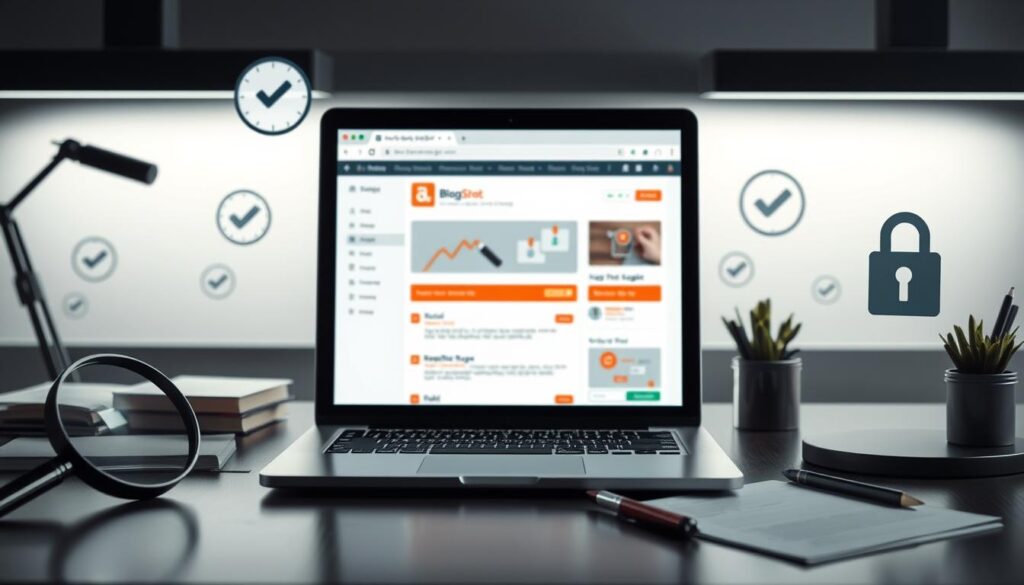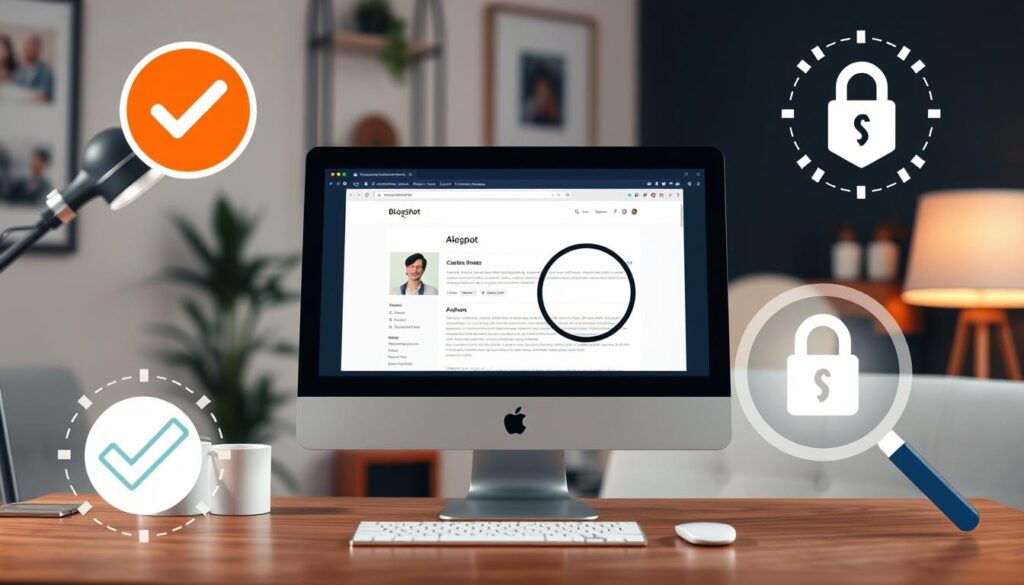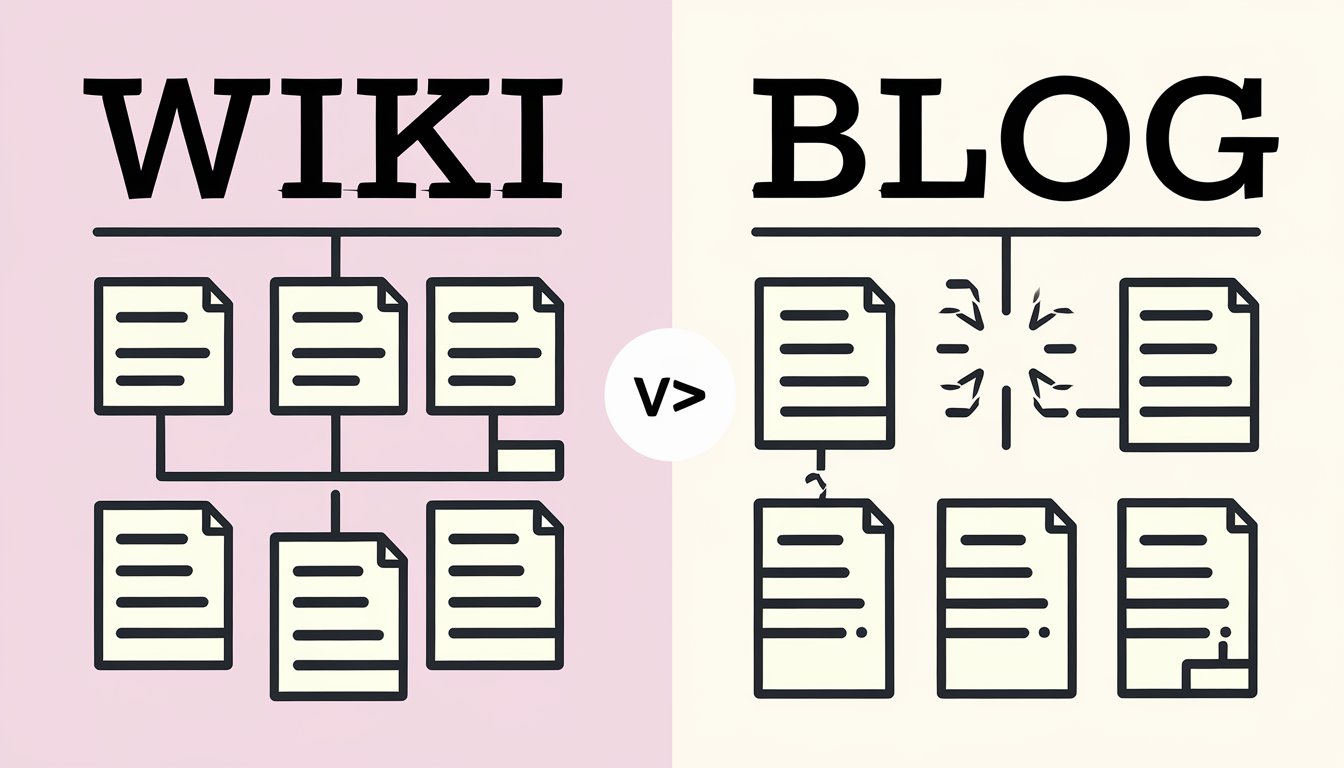How To Verify if Your Blogspot Blog Is Authentic
In today’s crowded blogging world, authenticity is the secret sauce that turns a blog from forgettable to unforgettable. It’s what sets successful blogs apart, building trust, loyalty, and a connection with readers that others can’t fake.
But how can you ensure your Blogspot blog resonates as genuine and trustworthy? Are you delivering content that speaks to your audience’s needs, or does your blog blend into the noise?
Understanding the hallmarks of an authentic blog can make all the difference in attracting loyal readers. This approach, along with proven blog writing tips, helps solidify your online reputation.
Let’s uncover the key elements that define blog authenticity, from crafting relatable content to fostering genuine engagement. With actionable steps and practical tips, you’ll have the tools to create a blog that stands out and deeply connects. Keep reading to learn how to make your blog shine in a sea of sameness!
The Importance of Blog Authenticity
Blog authenticity is key to building trust online. Authentic blogs showcase the creator’s true voice and unique experiences, fostering deeper connections with readers. In fact, 64% of readers trust authentic bloggers more, and blogs with genuine content grow 35% faster in loyal followers.
Authenticity doesn’t mean perfection. It’s about being real, relatable, and consistent in delivering valuable content. Successful bloggers often credit their authentic voice for setting them apart and building lasting relationships with their audience.

Signs of a Legitimate Blogspot Blog
To identify a genuine Blogspot blog, look for original, engaging content and a user-friendly layout. Real blogs keep their content fresh and interact with readers.
Many bloggers value privacy, with 78% of young bloggers using pen names to protect their identity. However, this doesn’t compromise the quality of their writing, as 91% remain steadfast in their views.
Active engagement is another key sign. Look for comments and social media links, as legitimate blogs often have a presence on platforms like Twitter or Facebook. This helps foster a sense of community.
Finally, check the blog’s longevity and posting frequency. Older blogs with regular updates demonstrate the blogger’s commitment and enhance credibility. Tools can help you verify the blog’s age and posting history.
Steps To Verify Blogspot Blog Authenticity
In today’s digital age, ensuring the authenticity of your Blogspot blog is essential for building trust with your audience. Verifying that your blog is genuine can protect your reputation and improve user engagement. Follow these simple, step-by-step instructions to confirm that your Blogspot blog is legitimate and secure.
1. Checking Ownership and Contact Information
A trusted blogspot blog always shows who owns it and how to get in touch. This makes the blog more believable and trustworthy. You can usually find this info on an “About” page or a “Contact” section.
Real bloggers like to talk to their readers. They might share an email or a contact form. This lets readers ask questions, give feedback, or report problems.
Google has made it easier to check if a blog is real. Now, Blogger-hosted blogs need a Meta tag verification. You add your blog’s URL to Webmaster Tools and put in a special meta tag. Keeping up with these changes helps keep your blog real and respected.

2. Reviewing the About Page
The About page is key in Blogspot blog verification. It’s often the most visited page, giving a peek into the blogger’s life. A well-made About page can increase trust and authenticity.
When checking a Blogspot blog’s authenticity, look for specific details about the blogger. This includes their expertise, background, and the blog’s purpose. Blogs with vague About pages may lack credibility.
An authentic About page should have a clear mission statement and credentials. It’s where bloggers can share their personality and connect with readers. Some use their real names, while others prefer pseudonyms.
Transparency is crucial in blogging. A genuine About page includes contact info and encourages interaction. It also points to important posts or categories, improving the user experience and authenticity.

3. Analyzing Social Media Connections
A true blog has active social media profiles that match its brand. These profiles share useful content and talk to their followers often.
To check if a blog is real, find its social media links. Go to these profiles and see if they link back to the blog. See if the content fits the blog’s theme and if it talks to its audience. Real bloggers aim to add value and make real connections.
Watch out for odd patterns in social media. Fast follower growth or lots of likes and comments quickly might be fake. Look for slow, natural growth and real talks in comments. Starting a blog and making a real online presence takes time and work.
Real influencers share great content often and act professionally. By checking social media, you can learn a lot about a blog’s truth and trustworthiness.
4. Researching the Blog’s Domain Age
When checking a blogspot blog legitimacy, looking into its domain age can be eye-opening. The age of a blog often speaks volumes about its authenticity. You can use WHOIS lookup tools to discover when someone first registers a domain. This information gives you a peek into the blog’s history and evolution.
Take the case of an official blogspot blog that changed its URL from “bloggerstatusforreal.blogspot.com” to “blogging.nitecruzr.net”. This renaming process shows the blog’s growth over time. Older domains with consistent content tend to be more trustworthy. But don’t write off newer blogs completely. They can be legitimate, too, but they are less established.
Remember, a blog’s age is just one piece of the puzzle. Look at how the content has evolved. Has it stayed true to its original purpose? Has it grown with its audience? These factors, combined with domain age, paint a clearer picture of a blog’s authenticity.

5. Evaluate User Engagement
A genuine blogspot blog shows strong user engagement. This is a key sign of Blogspot blog authority. Look for meaningful comments and regular chats between the blogger and readers. Also, a growing number of social media followers can show a blog’s value.
Statistics show that blogs are great for driving traffic and generating leads. Hubspot found that B2B marketers who blog get 67% more leads than those who don’t. This shows how important it is to create content that connects with your audience.
When checking a blog’s authenticity, focus on the quality of engagement. Genuine comments that start discussions are more valuable than simple replies. Choosing the right niche for your blog can greatly improve user engagement and boost your authority.
Metrics like time on page and bounce rate show how well content connects with readers. A low bounce rate and high time on the page mean visitors find the content valuable. Social media shares also show how much people appreciate your content and engage with your blog.
6. Assessing Content Credibility
A trusted Blogspot blog is popular for its commitment to credible content. Studies show that 57% of bloggers who focus on reliable sources see great results. They make sure to fact-check and cross-check their information.
Good blogs often feature guest posts from experts. They work with respected bloggers to diversify their content, which makes the blog more authoritative.
Look for citations and links to trusted sources in their posts. These show the blogger’s commitment to accuracy and transparency.
To check if a blog is credible, look at its fact-checking process. Many bloggers use tools like Snopes or FactCheck.org. They also do reverse image searches to check pictures. These steps help build a blog that readers can trust for real, useful information.
7. Investigating Backlinks and Mentions
Backlinks play a crucial role in verifying a Blogspot blog’s credibility. High-ranking Google results often have more quality backlinks, highlighting their importance for a blog’s reputation.
Tools like Semrush or Ahrefs can help analyze your blog’s backlink profile. Look for links from reputable sites within your niche — these signal your blog’s value. However, low-quality backlinks can harm your blog’s image and rankings. For instance, one site experienced a significant drop in rankings after acquiring numerous poor-quality links.
Beware of outdated practices like footer links, which Google now considers spammy. GoDaddy, for example, faced a loss of credibility due to excessive footer links. Similarly, Google’s algorithms can easily identify link networks, even though they may appear natural.
By carefully monitoring and maintaining a high-quality backlink profile, you can enhance the credibility and trustworthiness of your Blogspot blog.
8. Identifying Sponsored Content
When checking if a blog is real, spotting sponsored content is key. Real bloggers always say when they work with brands. They tell you at the start of posts or in special sections. This follows rules from the Federal Trade Commission.
On a real blogspot blog, you’ll see both sponsored and regular content. True bloggers pick partners that fit their values and what their readers like. They don’t sell out for money. Instead, they work with brands they really like and trust.
It’s important to know when content is sponsored. Look for clear signs and a mix of content types. Real bloggers earn their living fairly and are open with their readers.
9. Using Verification Tools and Resources
Verifying your Blogspot blog is key to keeping your online presence strong. Google Search Console is a top tool for this. It lets multiple owners verify the same blog in different ways. Once verified, you can manage your blog’s search visibility and track its performance.
You have several options to verify your Blogspot blog. You can upload an HTML file, add an HTML tag, or use your Blogger account. Remember, you must update verification tokens often to avoid expiration. After you verify, data collection starts right away. However, it might take a few days to see the results in your Search Console.
There are more tools beyond Google to keep your blog real. Plagiarism checkers help ensure your content is original. SEO analysis tools can also improve your blog’s visibility. Social media verification helps prove your blog’s authenticity. Using these tools, you can make your Blogspot blog more credible and reach more people.
Red Flags to Watch For
When checking Blogspot blog legitimacy, watch out for warning signs. A trusted Blogspot blog won’t bombard you with pop-ups or ask for personal details. Be cautious of blogs that pressure you to act fast or offer deals that seem too good to be true. The Better Business Bureau reports that 79% of people lost money to online purchase scams in 2020.
- Spelling errors in URLs.
- Lack of contact information.
- Excessive links to unrelated or suspicious sites.
- Persistent pop-ups requesting personal details.
- Grammar mistakes in the content.
- Unusual payment requests, such as gift cards or wire transfers.
- Offers that seem too good to be true or demand immediate action.
- Requests for sensitive data via unexpected emails, calls, or texts.
Scammers often use social engineering to trick readers into sharing sensitive data. Remember, legitimate companies and government agencies rarely request personal information through unexpected communications.
If something feels off about a Blogspot blog, trust your gut. Cross-check information with other reputable sources to ensure you’re engaging with a trusted Blogspot blog.
Wrap It Up: Elevate Your Blogspot Blog With Authenticity
Authenticity is the foundation of a successful blog — it’s what keeps readers coming back and fosters meaningful connections. By focusing on original content and engaging actively with your audience, you can create a Blogspot blog that resonates with readers. Consistently updating your blog will help ensure it stands the test of time.
Ready to take your blog to the next level? Explore expert tips and proven strategies at After Social to enhance your blog’s authenticity and engagement. Start applying these insights today and transform your Blogspot blog into a trusted, thriving platform that captures hearts and builds lasting trust.





